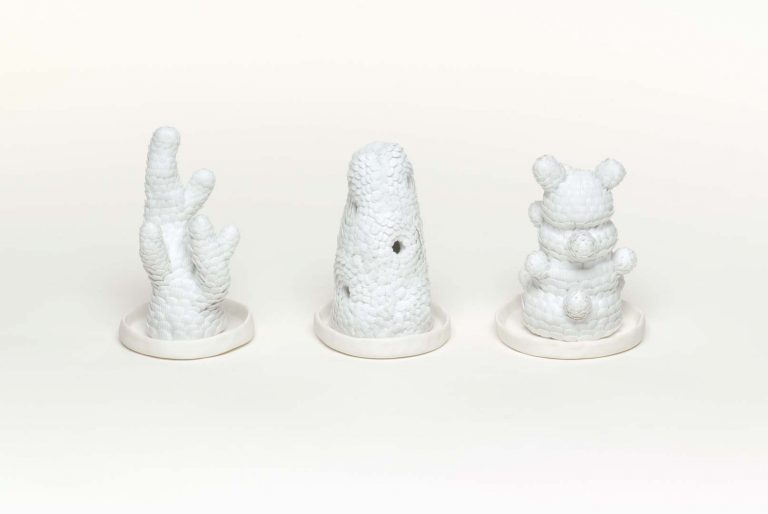We acknowledge the Traditional Owners of the land on which the Queensland Art Gallery | Gallery of Modern Art stands and recognise the creative contribution First Australians make to the art and culture of this country.

Vipoo Srivilasa / Thailand/Australia b.1969 / Bleach IV 2013 / Jingdezhen super white porcelain, unglazed / Six parts: 13.5 x 7 x 7cm, 12.7 x 7 x 7cm, 11.7 x 7.8 x 7.5cm, 1.5 x 10 x 10cm, 1.5 x 9 x 10cm, 1.5 x 8.5 x 8.5cm / Purchased 2014 with funds from an anonymous donor through the Queensland Art Gallery | Gallery of Modern Art Foundation / Collection: Queensland Art Gallery | Gallery of Modern Art / © Vipoo Srivilasa
Vipoo SrivilasaBleach IV 2013
Not Currently on Display
Bleach IV was created during a residency Srivilasa undertook in China’s historical porcelain centre of Jingdezhen. The town famously produced the porcelain (including the treasured blue and white wares) that became so popular for export to Europe from the seventeenth century, a trade between East and West that Srivilasa finds analogous of his own experience of migrating from Thailand to Australia.
Srivilasa discovered a traditional flower making technique used in Jingdezhen, borrowing the delicate petals once applied to vases to cover the surfaces of his sculptures. Presented on a base resembling a biologist’s Petri dish, this group of works expressed his concern for the environmental impact of global warming on coral reefs. He has left the works unglazed to resemble the stark white of dead coral.
Ceramic artist Vipoo Srivilasa practises art with a spirit of generosity, optimism and inclusion. Community-minded and attuned to contemporary concerns such as social justice and the migrant experience, he addresses these issues through artworks that offer hope for our troubled times.
Srivilasa is known primarily for his meticulously crafted blue-and-white porcelain sculptures that celebrate his Buddhist faith, the folktales and iconography of his Thai homeland and his life in Australia.
The blue-and-white palette Srivilasa has typically favoured references Lai Krarm, or Thai domestic tableware and, more broadly, the ceramics produced from the ninth century onwards in China’s Henan province, which were traded through the Middle East via the Silk Road and later imported to Europe. Srivilasa recognises the importation of blue-and-white ware as analogous to his own journey from East to West, and embraces the cross-cultural exchange it has entailed. ‘Nowadays,’ he says, ‘I find it hard to tell which culture is which in my work . . . The boundary is a blur.’1
Endnotes:
1 Vipoo Srivilasa, quoted in Alice Pung, ‘The colonisation of the cute – exploring the work of Vipoo Srivilasa’, Garland Magazine no. 6, 10 March 2017, accessed April 2021.